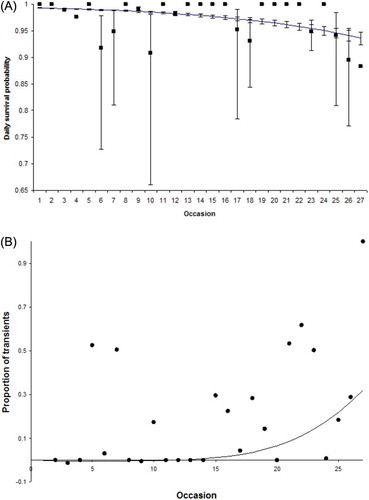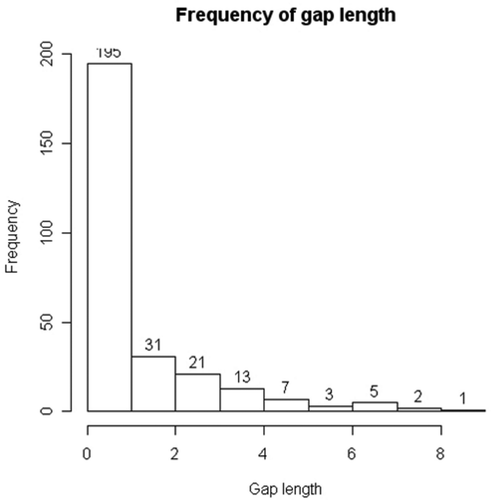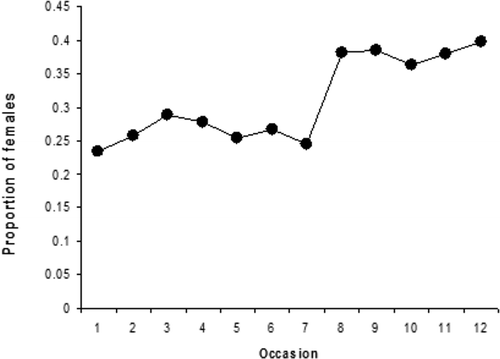Figures & data
Table I. Intervals between the capture–recapture occasions retained for the two analyses. The number refers to the interval in days between the current and the previous occasion. K = number of occasions retained; – = first occasion considered.
Figure 1. The proportion of females (black dots) form April to July seemed to increase. The lines (right axis) showed the number of newly marked lizards (males: dashed line, females: continuous line).

Table II. Modes and their estimates of daily survival in male and female lizards, f, and recapture probability, p. Model notation: f’ = newly marked male survival; s = sex; t = time; m = trap-dependent effect; * = interactions between effects; + = additive relationship between effects; t = trend over time; np = number of parameters. In model notation, ‘s’ to distinguish it from the daily survival denoted ‘f’ in the previous analysis. QAICc: Quasi-likelihood adjusted Akaike Information Criterion; DQAICc: Delta Quasi-likelihood adjusted Akaike Information Criterion; QDeviance: Quasi-likelihood Deviance.
Figure 2. A, A model assuming a linear constraint on survival as in Equation1 indicates that local daily survival decreased over time (solid line). Bars are the 95% confidence interval. B, Proportion of transient males, i.e. animals seen only at marking. Solid dots are from model f’(t) f(t*s) p(t + s + m) while the solid line indicates the expected values from the model f’(T) f(T*s) p(t + s + m).

Figure 3. Frequency of gaps, i.e. number of consecutive zeros between two recapture events, in April capture–recapture data.

Table III. Models of population size and recruitment, b, during the month of April Model notation: f’ = newly marked male survival; s = sex; t = time; m = trap-dependent effect; * = interactions between effects; + = additive relationship between effects; t = trend over time; np = number of parameters. In model notation, ‘s’ to distinguish it from the daily survival denoted ‘f’ in the previous analysis (see more details in the text).
Figure 4. The proportion of females in the study area during the month of April, estimated by averaging the derived estimates from model f(s) p(t + s) b(t + s) and f(s) p(t*s) b(t + s). The number of individuals estimated to be present at a given time is estimated as derived parameters (see text for details).

